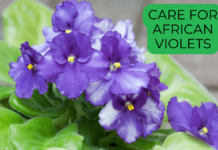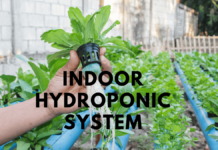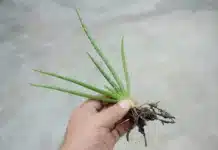Introduction African Violets
African violets, with their delicate beauty, are a popular choice among plant enthusiasts. However, despite their visual appeal, these plants can be a bit tricky to care for, especially when it comes to watering. Overwatering or improper watering techniques can lead to root rot, damaged leaves, and poor plant health. One common method for watering African violets is top watering, but if not done correctly, it can harm the plant. This guide will walk you through how to water your African violets from the top like a pro, providing you with the perfect techniques, the best time to water, and how to avoid common mistakes. By following these expert tips, you can ensure that your African violets thrive in your care.
Choosing the Right Watering Tools

When it comes to watering African violets from the top, the right tools can make all the difference. The most essential item you’ll need is a narrow-spout watering can. These are specifically designed to allow you to control the flow of water with precision, preventing splashing and ensuring that the water reaches the soil without disturbing the plant’s delicate leaves and flowers.
A narrow-spout watering can gives you better control over how much water is delivered to the soil, which helps avoid overwatering and damage to the plant. A lightweight watering can is also important, as it reduces strain on your hands and wrists while you maneuver around the plant. When using a watering can, tilt the pot slightly to ensure the water flows evenly into the soil, away from the plant’s crown. This will help prevent moisture from accumulating in the crown, which can lead to rot.
Watering Small Pots with a Syringe

If you have a small African violet pot, using a watering can with a narrow spout may not always be the best option. In such cases, a syringe can be a great tool for watering your plant. Simply fill a syringe with lukewarm water and, using one hand to gently lift and hold back the leaves, direct the water at the base of the plant. This method ensures that the water goes straight to the soil, avoiding the leaves and flowers. The gentle flow of water minimizes the risk of damaging the plant, and it also helps prevent excess moisture from collecting on the foliage.
Another benefit of using a syringe is that it allows you to be precise with how much water you’re giving your plant. Overwatering can be just as harmful as underwatering, so it’s essential to ensure the plant gets just the right amount of moisture.
Pro Tip: The best time to water your African violets is in the morning. This gives the leaves ample time to dry throughout the day, reducing the risk of fungal diseases that can thrive in damp conditions.
Using a Funnel for Controlled Watering
Another great method for watering African violets from the top is by using a funnel. A small funnel with a narrow tip can help control the flow of water and ensure that it reaches the soil without splashing on the leaves or flowers. Position the funnel at the base of the plant and slowly pour water into it. This technique is especially helpful when you’re dealing with smaller pots or plants that have densely packed foliage.
When using a funnel, it’s important not to pour too much water at once. Overwatering can lead to root rot, so pour slowly and steadily, ensuring that the water is absorbed by the soil without excess runoff. To make this method even more efficient, consider using a silicone funnel, which can be adjusted to fit snugly into tight spaces.
Pro Tip: To avoid spills, you can use a half-filled glass or cup to pour the water into the funnel. This allows you to control the amount of water going into the plant, ensuring that you don’t overwhelm the soil.
Creating a Plastic Barrier for Extra Protection
If you want to make watering even easier and protect your African violet’s leaves from moisture, using a plastic barrier can be a great solution. You don’t need to buy anything special for this; a simple plastic bag can do the job. Place the plastic over the pot, leaving a small slit near the soil to allow water to enter. This barrier prevents stray droplets from touching the plant’s delicate foliage while also creating a mini-humidity zone around the plant. African violets thrive in humid conditions, so this extra humidity boost will help them flourish.
This technique also allows you to water less frequently. The plastic cover helps retain moisture in the soil, which means you won’t have to water your African violets again for a longer period, typically 2-3 weeks. After watering, simply remove the plastic cover. The added humidity will help keep the plant healthy and reduce the risk of stress from inconsistent moisture levels.
Pro Tip: African violets prefer a humidity level of around 75%, so using this plastic barrier can significantly improve the plant’s environment.
Why Top Watering Works for African Violets
Top watering is a method of watering that involves pouring water directly onto the soil surface, allowing it to gradually seep down to the roots. For African violets, this method can be beneficial when done correctly. Unlike bottom watering, where water is absorbed through the pot’s drainage holes, top watering ensures that the entire surface area of the soil gets moist. This helps in evenly hydrating the plant and prevents dry spots in the soil, which can lead to uneven growth or stress.
However, top watering can be tricky, especially if not done carefully. If water is splashed on the leaves, it can encourage fungal diseases, and if the water collects in the crown, it can lead to rot. The key to successful top watering is to apply the water slowly, using tools like a narrow-spout watering can or syringe, to ensure it’s directed exactly where it’s needed.
Additional Tips for African Violet Care
While proper watering is essential, it’s only one aspect of caring for African violets. Here are a few additional tips to keep your plants healthy:
- Lighting: African violets thrive in bright, indirect light. Avoid placing them in direct sunlight, as it can scorch the leaves. A north or east-facing window is often ideal.
- Temperature: These plants prefer temperatures between 65°F and 75°F. Keep them in a warm spot but away from drafts or air conditioners.
- Fertilizing: Use a balanced fertilizer every 4-6 weeks during the growing season to promote healthy growth and vibrant blooms.
- Repotting: African violets don’t need frequent repotting, but it’s important to refresh the soil every year or two to prevent it from becoming compacted and nutrient-deprived.
Conclusion
Watering African violets from the top can be a highly effective method when done correctly. With the right tools and techniques, you can avoid the common pitfalls that often lead to damage and stress for these beautiful plants. Whether using a narrow-spout watering can, a syringe, or a funnel, the key is to apply the water carefully and consistently. Additionally, creating a micro-humidity environment with a plastic barrier can further enhance the plant’s health, making it thrive in your care. By incorporating these simple but effective methods, you’ll ensure that your African violets continue to bloom beautifully.
Remember, the best time to water your African violets is in the morning, allowing moisture to evaporate during the day, reducing the risk of diseases. Regular care, including proper watering, lighting, and temperature control, will help your plants live their best lives. With the right approach, caring for African violets can become an enjoyable and rewarding experience.
FAQs
- How often should I water my African violets? Water your African violets when the soil feels dry to the touch. Typically, they require watering once a week, but it can vary depending on the environment.
- Can I use tap water for African violets? Yes, but make sure to let tap water sit for a few hours to dissipate any chlorine before using it. Alternatively, you can use distilled or rainwater.
- Why do my African violet leaves turn yellow? Yellowing leaves may indicate overwatering, poor drainage, or too much direct sunlight. Adjust your care routine accordingly.


























